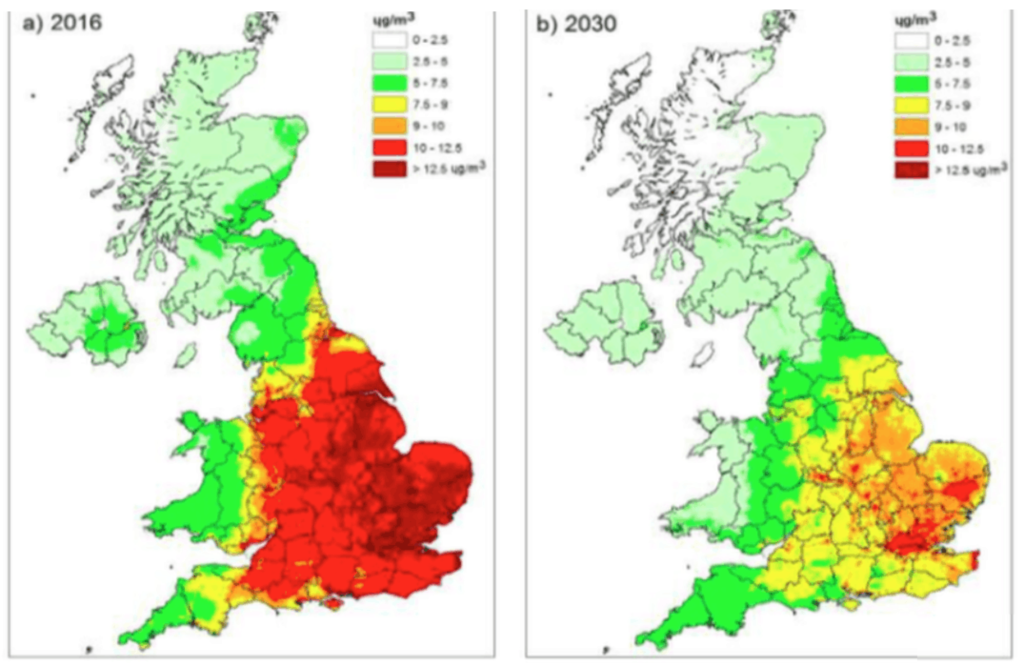The 2019 Clean Air Strategy was recently announced, which gave an insight into what the government are doing to ensure cleaner air in the UK. It was great to hear they recognise that Ecodesign stoves are playing a key role in helping make a cleaner environment, and segregating these high efficiency stoves from polluting open fires and inefficient old stoves. The Clean Air Strategy looked at a number of elements, which impact on air quality, although for us as a business we were specifically interested to hear their views around burning wood, and in general how we are progressing in the UK with cleaner air.
The Good News:
The good news is that pollution in the UK is already declining. From the graph below, which has been created by DEFRA, we can see there is a step decline in nitrogen oxides, NMVOC’s, PM2.5 and sulphur dioxide. This graph, which looks at percentage change in emissions since 1970 shows a very positive change – evidence that things are moving in the right direction.

PM 2.5 – Why is it so bad?
PM2.5 is of significant worry to the WHO (World Health Organisation), and is considered highly hazardous to human health. The reason for this is due to these very small PM’s (particulate matter) can easily pass into the lungs, blood stream and brain – causing a wide range of illnesses and disease. PM2.5 is the name given to particulate matter, which has a size of less than 2.5 micrometers, which is about 3% the width of a human hair!
The WHO’s models indicate that around 92% of the world’s population live in places where air quality levels exceed their guidelines. As part of their Clean Air Strategy, the UK government aims to reduce the number of towns and cities, which exceed this WHO safe limit, by 50% – by the year 2025. Currently around 40 towns and cities in the UK exceed this limit.
Turning the gun on farming:
The Clean Air Strategy 2019 did place a focus on farming, as a contributor of pollution, with increasing levels of ammonia use. The main issue here is the gas reacting in the air, which is then blown towards towns and cities – further adding to and exacerbating the problem.
PM2.5 – How it could alter over the coming years
The diagram below, shows the levels of PM2.5 around the UK in 2016 and projected in 2030. This information has been compiled by Imperial College, London. Inside a number of years, there could be a significant reduction in PM2.5 around the UK. While many areas will improve, in Central London and a few other locations, there will still be more work to be done to “get out of the red” – although this area should also hopefully be enjoying cleaner air – a hard task in touch an industrialised, populated area.

Cleaner Air & Wood Burning Stoves:
There is a lot of misleading information around stoves, such as they emit more particles than a diesel truck. This is misleading. The government did mention in their Clean Air Strategy:
“Not all forms of domestic burning are equally polluting. The appliance (for example, stove or fireplace), how well it is used and maintained, and what fuels are burnt in it, all make a big difference to how much pollution is produced. Significant air quality benefits can be realised through a new efficient appliance as compared with an old stove or open fire.”
The fact is, Ecodesign is the way forward for stoves. In 2022 they will be the only stoves you can buy in the UK. Ecodesign will help drive down emissions from stoves, old non-Ecodesign stoves will be phased out, more and more controls will be placed on burning the right type of wood.
Already schemes like “Ready to Burn” from Woodsure, are being rolled out, which educates people about the importance of only burning correctly seasoned wood. A number of retailers are already getting on board with this.
For more information on our wood burning stoves please click here.








